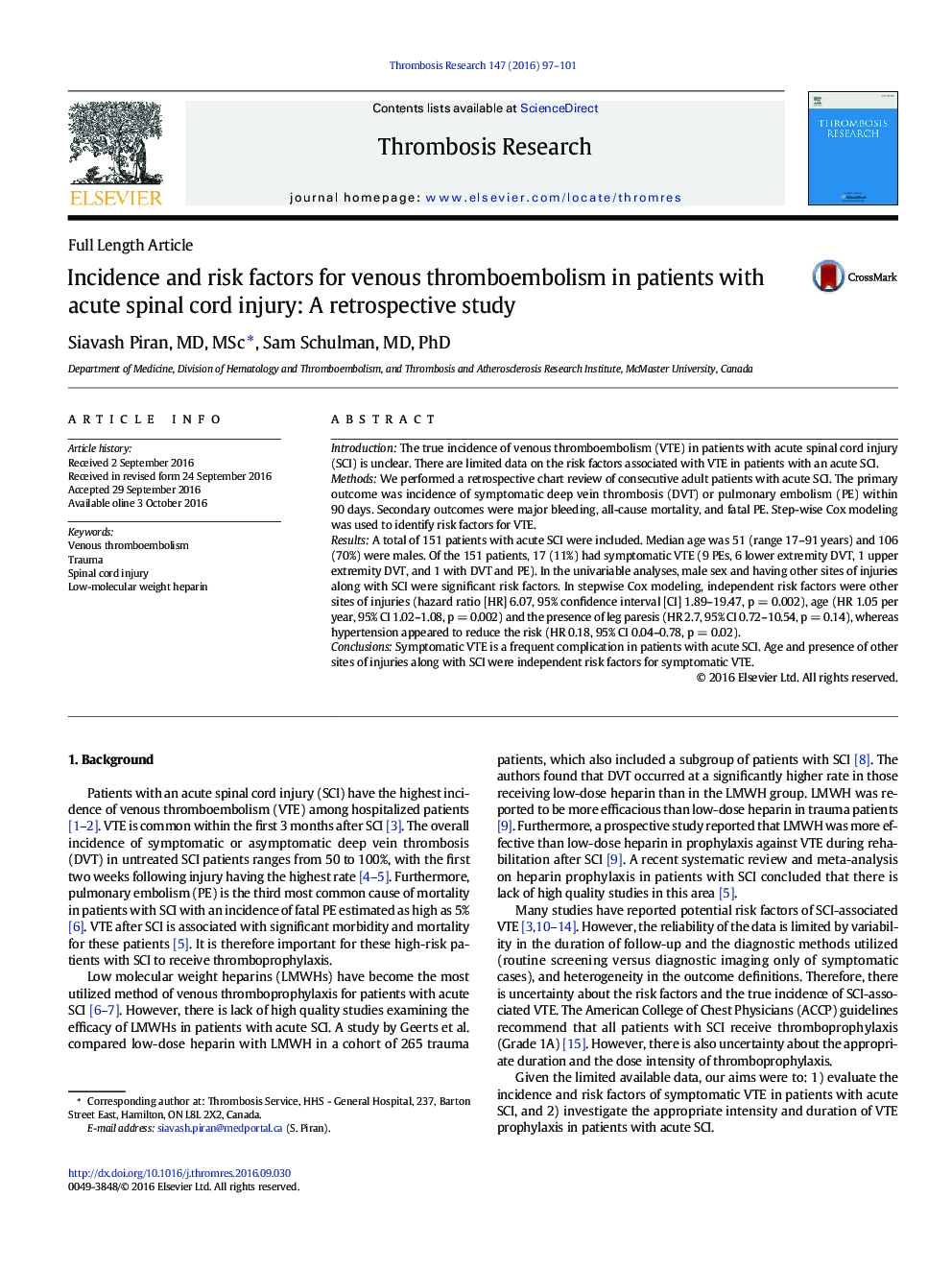| Article ID | Journal | Published Year | Pages | File Type |
|---|---|---|---|---|
| 6000284 | Thrombosis Research | 2016 | 5 Pages |
â¢Venous thromboembolism was found in 11% of patients with acute spinal cord injury.â¢Age and presence of other sites of injuries along with SCI were VTE risk factors.â¢No difference in rate of VTE between low-dose LMWH versus increased intensity LMWH.â¢Randomized controlled trials with DOACs in this population are needed.
IntroductionThe true incidence of venous thromboembolism (VTE) in patients with acute spinal cord injury (SCI) is unclear. There are limited data on the risk factors associated with VTE in patients with an acute SCI.MethodsWe performed a retrospective chart review of consecutive adult patients with acute SCI. The primary outcome was incidence of symptomatic deep vein thrombosis (DVT) or pulmonary embolism (PE) within 90 days. Secondary outcomes were major bleeding, all-cause mortality, and fatal PE. Step-wise Cox modeling was used to identify risk factors for VTE.ResultsA total of 151 patients with acute SCI were included. Median age was 51 (range 17-91 years) and 106 (70%) were males. Of the 151 patients, 17 (11%) had symptomatic VTE (9 PEs, 6 lower extremity DVT, 1 upper extremity DVT, and 1 with DVT and PE). In the univariable analyses, male sex and having other sites of injuries along with SCI were significant risk factors. In stepwise Cox modeling, independent risk factors were other sites of injuries (hazard ratio [HR] 6.07, 95% confidence interval [CI] 1.89-19.47, p = 0.002), age (HR 1.05 per year, 95% CI 1.02-1.08, p = 0.002) and the presence of leg paresis (HR 2.7, 95% CI 0.72-10.54, p = 0.14), whereas hypertension appeared to reduce the risk (HR 0.18, 95% CI 0.04-0.78, p = 0.02).ConclusionsSymptomatic VTE is a frequent complication in patients with acute SCI. Age and presence of other sites of injuries along with SCI were independent risk factors for symptomatic VTE.
